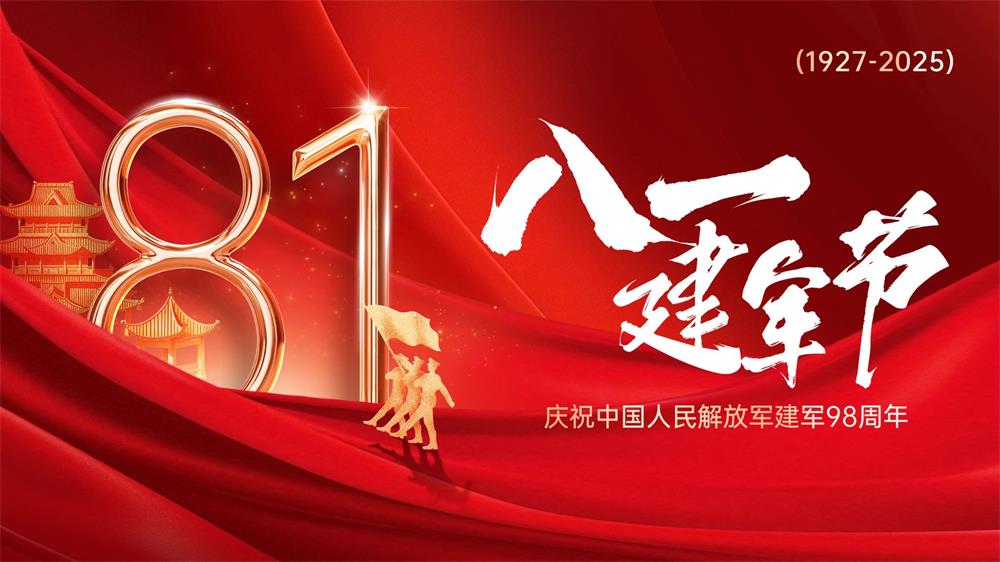Honoring the Legacy: Reflections on China’s Army Day (August 1st)
Introduction
Every year on August 1st, China observes Army Day, known in Chinese as “建军节” (Jiànjūn Jié), in honor of the founding of the People’s Liberation Army (PLA). This significant national day is more than a military celebration; it is a moment for the Chinese people to reflect on their history, express gratitude toward those who serve, and look ahead to the future role of the armed forces in national development, peacekeeping, and global cooperation.
Army Day is not marked by fireworks or elaborate public festivities like some other holidays. Instead, its solemnity lies in quiet remembrance, deep respect, and pride in China’s military legacy. For citizens, veterans, and soldiers alike, it is a time of national reflection, personal stories, and collective memory.
In this blog, we’ll explore the origins of Army Day, the historical evolution of the PLA, the cultural and social impact of this commemoration, and its significance in the context of modern China.

1. The Origin of Army Day: Nanchang Uprising
The roots of Army Day lie in a critical turning point in Chinese history. On August 1, 1927, the Nanchang Uprising was launched under the leadership of the Communist Party of China (CPC), marking the birth of the Communist military forces. At that time, China was caught in political turmoil, with nationalist forces led by the Kuomintang (KMT) turning on the communists despite their earlier alliance in the fight against warlords.
To counter this betrayal and defend their political vision, Communist leaders such as Zhou Enlai, He Long, Ye Ting, Zhu De, and Liu Bocheng organized an armed revolt in Nanchang, Jiangxi Province. Though the uprising was eventually suppressed, it symbolized the beginning of a new revolutionary force.
The significance of this date was later formally recognized in 1933 when the Chinese Soviet Republic, headquartered in Ruijin, Jiangxi, declared August 1st as Army Day. This was officially adopted by the central government after the establishment of the People’s Republic of China in 1949.
2. The Evolution of the PLA
From a small guerrilla force fighting under dire conditions to the world’s largest standing army, the PLA’s transformation has mirrored China’s own rise on the global stage.
The Early Years (1927–1949):
The Red Army (as the PLA was originally known) endured hardship, political suppression, and brutal civil war. One of the defining moments was the Long March (1934–1935), during which the Red Army undertook a massive strategic retreat, showcasing incredible perseverance and tactical skill. The PLA also played a pivotal role in resisting Japanese aggression during the Second Sino-Japanese War (1937–1945), eventually emerging as a key military force in the fight for Chinese independence and reunification.
Post-1949 Consolidation:
After the founding of the People’s Republic, the PLA shifted from revolutionary warfare to national defense. It participated in key conflicts, such as the Korean War (1950–1953), where Chinese troops played a decisive role. Over the following decades, the PLA underwent modernization and institutional reforms, establishing a clear military doctrine, professional officer corps, and strategic command.
Modernization Era (1978–Present):
Since China’s reform and opening-up under Deng Xiaoping, the PLA has undergone significant structural and technological upgrades. In the 21st century, under the leadership of President Xi Jinping, the PLA has prioritized modernization, mechanization, informatization, and intelligent warfare, aiming to become a world-class military by 2049.
Today, the PLA includes several branches:
PLA Ground Force (PLAGF)
PLA Navy (PLAN)
PLA Air Force (PLAAF)
PLA Rocket Force (PLARF)
PLA Strategic Support Force (PLASSF)
These divisions reflect the shift from traditional defense to multidimensional capabilities in air, sea, cyber, and space warfare.
3. What Army Day Means to the People
While Army Day is not a public holiday in the sense of a nationwide day off, it holds immense emotional and symbolic significance. It is observed through various activities:
Military parades and flag-raising ceremonies
Commemorations at war memorials
Visits to veterans and military families
Media tributes, documentaries, and educational programming
Community outreach programs by military units
In many schools, students learn about the Red Army’s sacrifices and the values of patriotism and discipline. In rural communities, particularly in provinces like Jiangxi and Shaanxi, which were key revolutionary bases, Army Day is a heartfelt occasion, often accompanied by reenactments or exhibitions.
For families of military personnel, it is a day of recognition and pride. For veterans, it is a moment of reflection—on battles fought, comrades lost, and the honor of service.
4. Cultural Symbolism and National Identity
The PLA is deeply embedded in the Chinese national psyche. It symbolizes unity, discipline, sacrifice, and national sovereignty. Throughout modern Chinese history, the army has not only defended borders but also contributed to natural disaster relief, infrastructure building, pandemic response, and international peacekeeping.
In literature and film, the PLA is portrayed as a heroic force. Works like “The Battle at Lake Changjin” or “My People, My Country” celebrate the sacrifices of soldiers in various historical moments. These cultural productions strengthen public connection to military values and remind new generations of the cost of peace and independence.
5. China’s Army in the World Today
In recent decades, China has increasingly emphasized the role of the PLA in global peacekeeping and international cooperation. Chinese forces have participated in UN missions in Africa and the Middle East, offered humanitarian aid during natural disasters, and maintained naval escorts in piracy-prone waters such as the Gulf of Aden.
Furthermore, China has emphasized its “peaceful development path”, reassuring the international community that its growing military is not meant for hegemony but for defense, global stability, and protection of international interests such as trade routes and peacekeeping.
However, with rising geopolitical tensions—particularly in the Taiwan Strait and South China Sea—the PLA’s development has also been closely watched. Army Day is often used as a moment to showcase strength and resolve, including unveiling new military technologies and equipment, which sometimes draws global attention and commentary.
6. Looking Ahead: The Role of the PLA in China’s Future
As China advances toward its centennial goals (2049), the PLA will remain a central pillar of national strength. In addition to traditional military preparedness, the future of the PLA involves:
AI and autonomous warfare
Cybersecurity and information warfare
Space exploration and defense
Joint training with global forces
Stronger civil-military integration
Domestically, the PLA also plays a role in maintaining internal stability and responding to emergencies—earthquakes, floods, and now increasingly, climate-related crises.
Moreover, China’s emphasis on building a “strong army for a strong nation” suggests that the military will continue to play a key role in the broader goal of national rejuvenation.
7. Personal Reflections on Army Day
For many Chinese people, Army Day is deeply personal. It’s not just about the military—it’s about family, sacrifice, history, and pride. It’s about remembering grandfathers who fought in wars, uncles who joined the navy, neighbors who served on the border, and young people who leave home to join the ranks every year.
Even for those not connected to the military, the spirit of the PLA—resilience, perseverance, loyalty, and courage—resonates. These values are not limited to the battlefield but are echoed in classrooms, factories, hospitals, and farms across the country.
In a rapidly changing world, Army Day provides a moment of continuity and identity, reminding citizens of where they came from and what holds them together.
Conclusion
As China marks another August 1st, the celebration of Army Day is not just about saluting soldiers—it is about honoring a spirit of collective resilience, a history carved in struggle, and a future shaped by unity and strength. From the mud-stained boots of 1927 to today’s high-tech command centers, the journey of the PLA reflects the journey of a nation.
In remembering the past and honoring those who serve today, we also commit to peace, progress, and the dream of a prosperous, secure future for all.
Happy Army Day. 向人民子弟兵致敬!




